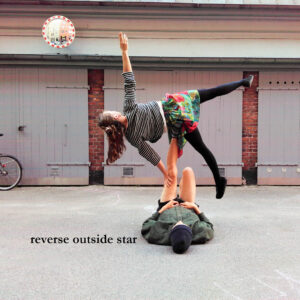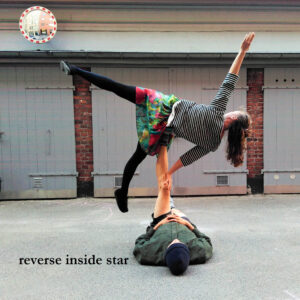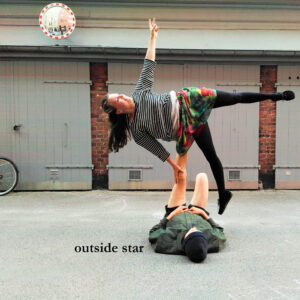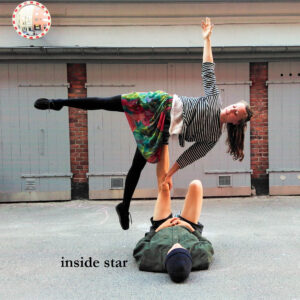This post is originally posted on my site peterhunter.dk
The 4 positions that fall under the name of Side Star are important “stars” in the universe of acroyoga movement. You will visit them many, many times in your acro-journey, especially if you love flowy flows. They have in common that the flyers full weight is supported through the hip on one foot of the base with the flyers center of mass being very close to the base of support (for a clarification of these terms check out my math/physics acroyoga paper), giving lots of stability.
Sidestar is classified by two variables:
Flyers hip
* Left
* Right
Direction of flýers navel
* towards bases head
* away from bases head
This gives us 2⋅2 = 4 possible Side Stars. (Keep in mind this is on ONE of the bases feet, otherwise there are 8 possible Side Stars.)
In naming the Side Stars, I follow the tradition (learned this from Lux, Acrogasm…) of using the terms “Inside Star” and “Outside Star” to indicate whether the flyers head is on the inside or outside of the basing foot. In other words, which direction is the head pointing relative to the bases foot? Finally, the prefix “reverse” indicates when the front part of the flyers body is facing away from the bases head. Take a look at the four positions:
In acroyoga and any other movement discipline, it is essential to have a congruent vocabulary for body positions, joint movements and sequences – in other words, a common and efficient language. It makes feedback precise and less confusing. Which in terms lifts the quality and safety (!) of our practice, as well as increasing the actual practice-time. (Less Talk, More Acro! LTMA)
Names are always arbitrary. Those who “get” to name things because of history don’t always choose very logical schemes (as perceived by the next generations). Sometimes a fresh start is needed, sometimes we just keep saying what we always do. But don’t become a bickering philosophizer and historian while younger minds practice, learning and enjoying themselves regardless of the copyright drama.
And create your own systems! Dig them up, shine a light on them, rebuild them, combine them, alter and adjust them – while respecting tradition as much as possible – so that the systems can serve you well and increase your awareness.
You cannot share your practice without having a way to speak about what you do with your community. Consciously or not, you already have a system, with built in costs and benefits. It’s affecting your process and results. Realize this and you have taken the most important step towards owning your practice. Now you have awareness, and can start tinkering and refining to find new and better pathways towards your actual needs and wants.
As a teacher, you must communicate, thus passing on your system to others. Again, consciously or not. This places a responsibility on you to be aware of what seeds you are planting.
Of course acroyoga is not all about talking and conceptualizing, the learning process is very visual and embodied. But the Monkey See, Monkey Do method will only bring you so far as a teacher, and all the monkeys will be chattering about their activities along the way. What words are they going to use?
Learn the history, respect those who came before and inspired you. And above all, be pragmatical! Words can be huge sources of conflict, but above all they are CONTAINERS of significance and meaning, amazing entry-points for understanding another human being. Words have consequences.
Develop the art of listening. and find patience and curiosity for each others use of words.
I love to create systems – for my own learning, for my teaching, for the beauty of elegant classification. That said, I am aware of my information-addict tendencies, and do not wish to spend more energy on analysis than necessary (making the means the end) – because static knowledge structures are dead. In a living movement practice, everything comes together in embodied, not only intellectual, experience.




